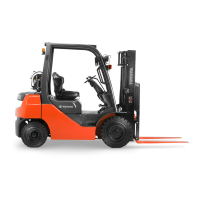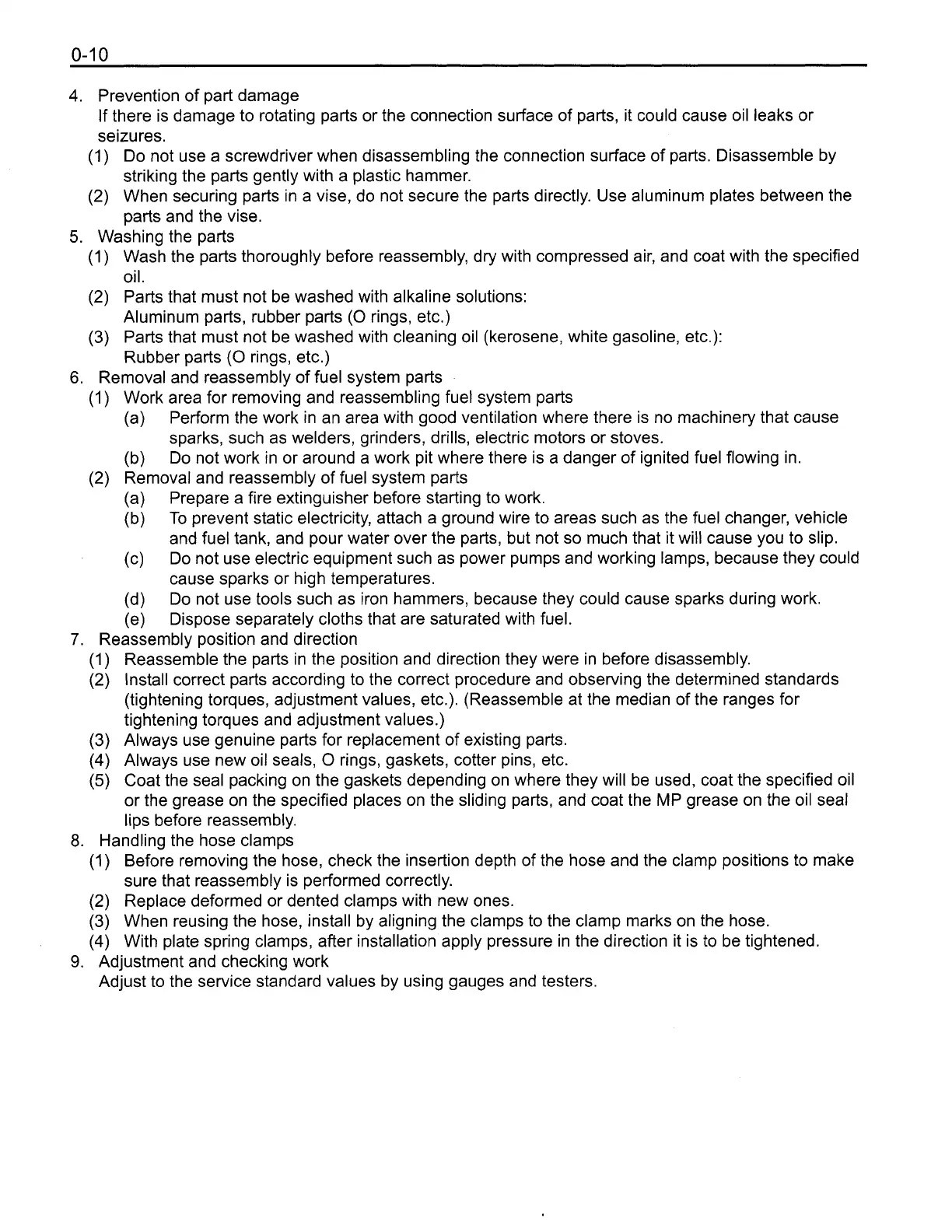4.
Prevention of part damage
If there is damage to rotating parts or the connection surface of parts, it could cause oil leaks or
seizures.
(1) Do not use a screwdriver when disassembling the connection surface of parts. Disassemble by
striking the parts gently with a plastic hammer.
(2) When securing parts in a vise, do not secure the parts directly. Use aluminum plates between the
parts and the vise.
5. Washing the parts
(1) Wash the parts thoroughly before reassembly, dry with compressed air, and coat with the specified
oil.
(2)
Parts that must not be washed with alkaline solutions:
Aluminum parts, rubber parts (0 rings, etc.)
(3) Parts that must not be washed with cleaning oil (kerosene, white gasoline, etc.):
Rubber parts (0 rings, etc.)
6.
Removal and reassembly of fuel system parts
(1) Work area for removing and reassembling fuel system parts
(a)
Perform the work in an area with good ventilation where there is no machinery that cause
sparks, such as welders, grinders, drills, electric motors or stoves.
(b)
Do not work in or around a work pit where there is a danger of ignited fuel flowing in.
(2)
Removal and reassembly of fuel system parts
(a)
Prepare a fire extinguisher before starting to work.
(b)
To prevent static electricity, attach a ground wire to areas such as the fuel changer, vehicle
and fuel tank, and pour water over the parts, but not so much that it will cause you to slip.
(c)
Do not use electric equipment such as power pumps and working lamps, because they could
cause sparks or high temperatures.
(d)
Do not use tools such as iron hammers, because they could cause sparks during work.
(e)
Dispose separately cloths that are saturated with fuel.
7.
Reassembly position and direction
(1) Reassemble the parts in the position and direction they were in before disassembly.
(2) Install correct parts according to the correct procedure and observing the determined standards
(tightening torques, adjustment values, etc.). (Reassemble at the median of the ranges for
tightening torques and adjustment values.)
(3) Always use genuine parts for replacement of existing parts.
(4) Always use new oil seals,
0
rings, gaskets, cotter pins, etc.
(5) Coat the seal packing on the gaskets depending on where they will be used, coat the specified oil
or the grease on the specified places on the sliding parts, and coat the MP grease on the oil seal
lips before reassembly.
8.
Handling the hose clamps
(1) Before removing the hose, check the insertion depth of the hose and the clamp positions to make
sure that reassembly is performed correctly.
(2)
Replace deformed or dented clamps with new ones.
(3) When reusing the hose, install by aligning the clamps to the clamp marks on the hose.
(4) With plate spring clamps, after installation apply pressure in the direction it is to be tightened.
9.
Adjustment and checking work
Adjust to the service standard values by using gauges and testers.

